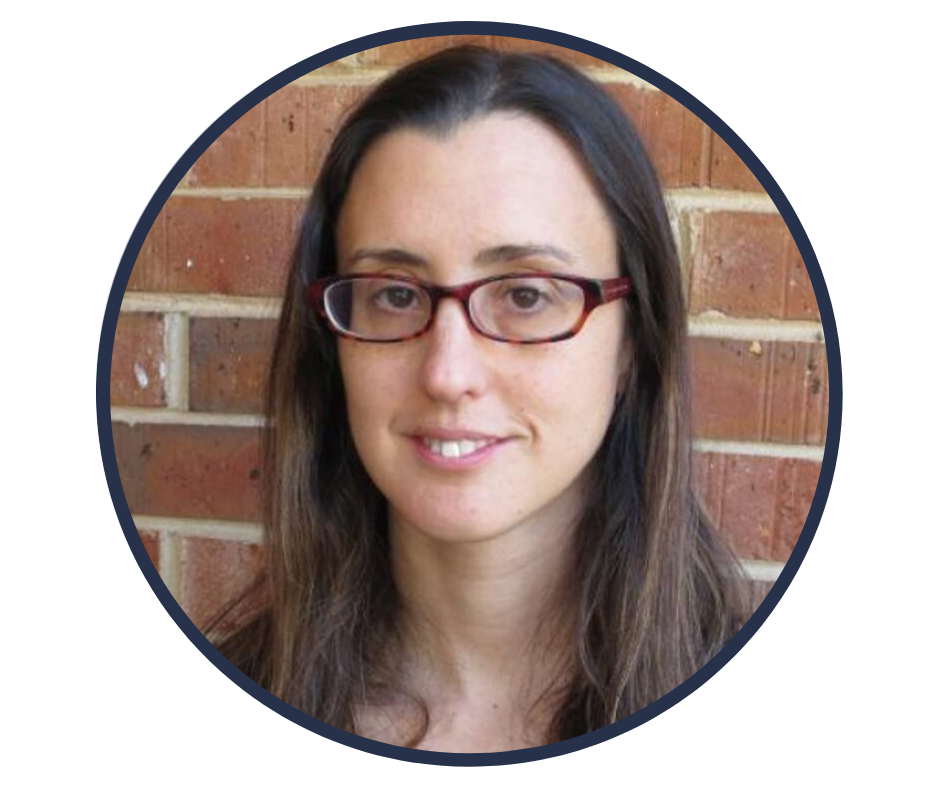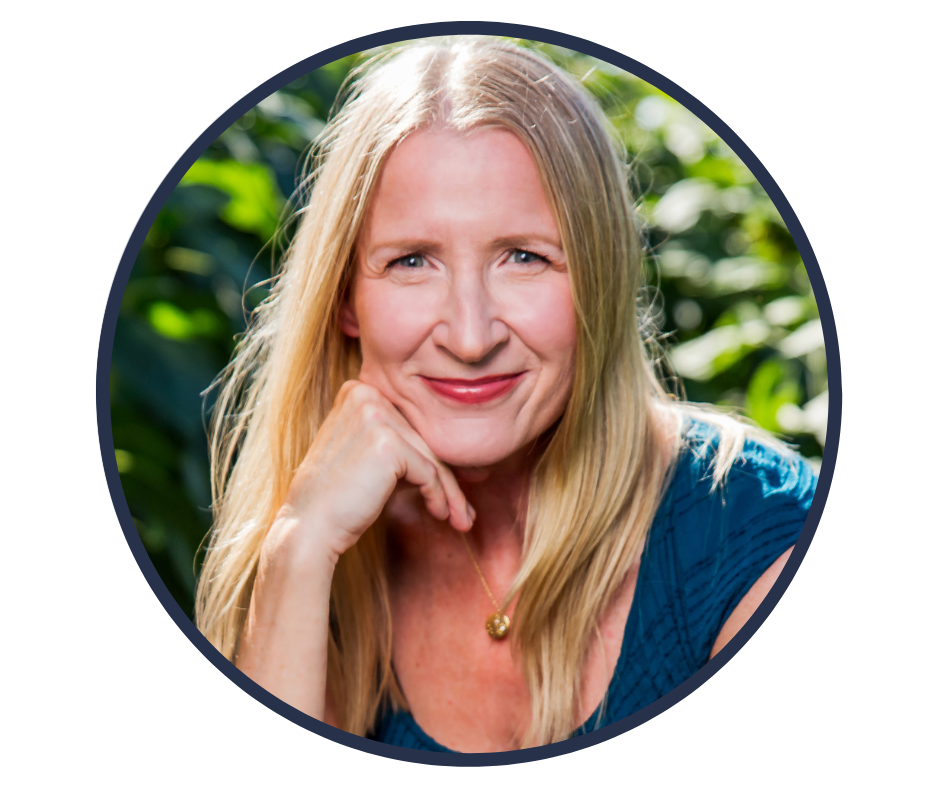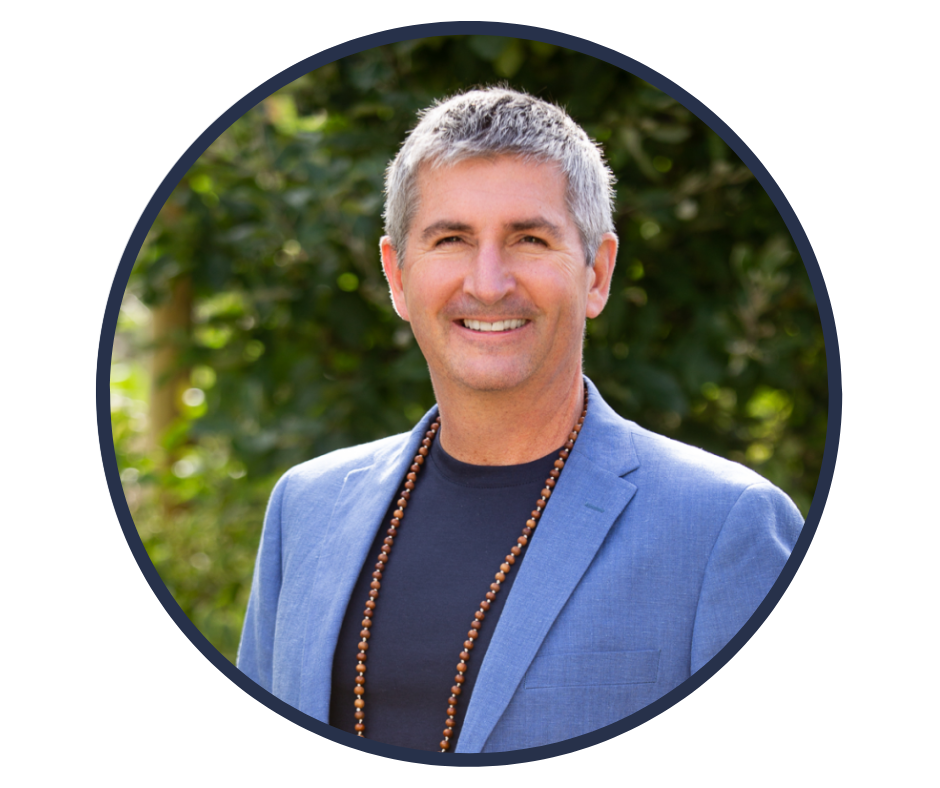Yoga and Science in Pain Care - Compassionate Pain Care: Where Science & Humanity Merge
By: Anna DiMarco (BMRPT) ∙ Estimated reading time: 9 minutes
By: Anna DiMarco (BMRPT) ∙ Estimated reading time: 9 minutes

This is the 14th blog post in a series based on the Yoga and Science in Pain Care Book Club, a 15-part course based on the book of the same title, by Neil Pearson, Shelly Prosko, and Marlysa Sullivan. You can find the blogs corresponding to Chapter 1, Chapter 2, Chapter 3, Chapter 4, Chapter 5, Chapter 6, Chapter 7, Chapter 8, Chapter 9, Chapter 10, Chapter 11, Chapter 12, Chapter 13 and Chapter 15.
Every Once in the Bluest Moon

My memory of the specialist, a new physician not known to me prior to this “episode”, is as vivid today as it was decades ago. He extended his hand to take mine gently in his, not to shake it, but rather to simply hold it as he gave me the news. He fixed his kind eyes on mine, penetrating to something residing deep within me. He gently reassured me that I was going to be okay as the biopsy results revealed “benign reactive tissue”. His gaze, his tone, his demeanor and his approach were full of a tender compassion I was not accustomed to receiving from previous consulting specialist physicians. He didn’t know much about me, but he knew my recent medical history vaguely and understood the level of fear and uncertainty this new lump had created. Tears of relief filled my eyes and I thanked him for the good news and prepared to walk out his door. He put his hand on my shoulder, took my left hand in his own hand once again and sent me off with a gentle but heartfelt blessing. As I walked out of the hospital that day, I felt something far beyond and much greater than simple relief following this simple but profound interaction.

Many of us will have experienced the healing power of love and compassion when we received it from someone near and dear to us, our mother or grandmother or a close friend. The simple act of being seen, being heard, being “held” either physically or emotionally through the lens of love and compassion has the power to transform our physical or emotional pain into something less threatening or disruptive. We feel supported, less isolated, grateful to not be alone with our suffering. But how many of us have experienced this type of compassionate care from a healthcare provider while dealing with an acute medical crisis or chronic health situation? Furthermore, can we ever recall a time when an esteemed medical leader, while in the midst of professional peers, boldly espoused the healing value of love and compassion in healthcare?
Lorimer Moseley is a world-renowned clinical scientist and pain researcher who leads the Body in Mind research group which investigates the role of the brain and the mind in chronic pain. When asked what the most important piece of advice would be for someone suffering with pain, he offered up an ancient wisdom: “To love and be loved.” Certainly, after reading the very thought-provoking and illuminating Chapter 14 of YOGA and SCIENCE in PAIN CARE written by Shelly Prosko, one recognizes that his response offers a succinct bullseye summary of the extraordinary value of love and compassion in pain care, for those suffering with persistent pain and for those working with this population.

Shelly Prosko is a licensed physiotherapist, yoga therapist, educator and pioneer in the world of integrating yoga into healthcare. She believes compassion is the foundation of healthcare and overall well-being. Throughout this chapter, Compassion in Pain Care, and the associated webinar, Compassion in Pain Care, Shelly takes us on an experiential, anecdotal and evidence-based journey weaving the layers of science, intuition, yoga, clinical practice and humanity together. The powerful and fascinating tapestry of insights she offers leads us to the same conclusion she shares with Lorimer Moseley - people in pain need love and compassion, from self and from the people and the systems working with them. Furthermore, Shelly effectively demonstrates that those of us working with people suffering from persistent pain also benefit from extending and receiving love and compassion from self and others.
Yoga, an inherently compassionate practice, offers a valuable and easily accessible framework from which to enhance self-compassion, compassion for others and to support compassionate pain care.
Compassion Does Not Fatigue: Empathy Does
While both compassion and empathy involve responding to other people’s emotions, they are theoretically and neurobiologically quite different.
Empathy is characterized by an attempt to feel the same emotions from the other person’s perspective.
Compassion is characterized by the desire to take action to help the other person, to alleviate their suffering in some way.
Feeling empathy is thought to be the first step in building connection in human interactions. However, sharing someone’s negative experiences can become emotionally burdensome as we may “overidentify” with their situation. This could become particularly troublesome for those of us working with people with persistent pain as it may lead to a sense of powerlessness, emotional withdrawal and disconnection, and, eventually, to a state of professional burnout and an incapacity to offer compassionate care.
The emerging research in the field of social neuroscience reveals that “compassion fatigue” is in fact a misnomer as compassion does not physiologically “fatigue” us but rather motivates us, connects us, and rejuvenates us.

Hence, the more accurate label for what has been deemed as “compassion fatigue” may best be identified as “empathic distress”. Interestingly, research has demonstrated that empathic distress can be alleviated or reversed by learning how to turn empathy into compassion.
Compassion: High-yield Investment
Not only does compassion reverse empathic distress within our healthcare providers, there is a significant amount of compelling evidence that demonstrates the unique and powerful value of providing compassion in healthcare for ALL stakeholders. The evidence clearly demonstrates that everyone benefits — the patient/consumer, the practitioner and the health care system— from a model of care that includes compassion.
Compassionate care has been shown to improve quality of care, improve patient outcomes and satisfaction, strengthen therapeutic alliance, enhance the medical management of people with chronic illness, improve the health and well-being of healthcare professionals, reduce the rate of professional burnout, and reduce medical costs and rates of medical errors and malpractice claims.
Certainly, there will always be barriers to providing compassionate care and even when the practitioner is able to overcome their personal challenges (unmanaged personal distress, being overwhelmed by patient’s distress etc), there may be environmental, systemic and organizational flaws that do not support compassionate care.
See Table 14.2 below for an overview of a potential model for compassionate pain care.
A Potential Model for Compassionate Pain Care

Table 14.2 taken and adapted from Prosko, S. (2019). Compassion in Pain Care. In: Pearson N, Prosko S, Sullivan M. (Eds). Yoga and Science in Pain Care: Treating the Person in Pain. London, UK: Singing Dragon Publishers; pp.235-256.
Scattering Seeds of Compassion: Start with Your Own Garden
Our journey towards cultivating greater compassion within any system is best served when we start with cultivating greater compassion for ourselves. Kristin Neff, a pioneer in self-compassion research and author of Fierce Self-Compassion, describes self-compassion as compassion turned inward. She has outlined that self-compassion has three main components: mindfulness, a sense of common humanity and self-kindness.
Self-compassion, whether intrinsically available or whether offered as a therapeutic intervention, serves the patient with persistent pain very well. A growing body of evidence suggests that self-compassion (as a trait) can help counteract the many negative emotional and psychological sequelae of having persistent pain such as decreased self-efficacy, negative affect and pain catastrophizing and rumination. Recent research also reveals that self-compassion may be associated with increased pain acceptance and decreased levels of depression, stress and anxiety in patients with persistent pain.
The preliminary data from two studies reveal that interventions aimed at improving self-compassion were successful at reducing pain intensity, psychological distress and anger and increasing pain acceptance. Although the exact mechanisms behind the positive results are not fully understood, the research suggests that

Healer, Heal Thyself
Cultivating a greater level of self-compassion amongst healthcare professionals is also a worthwhile endeavor as increased self-compassion in the healthcare provider will shine the light in all directions, improving the health and wellbeing of the practitioner themselves as well as increasing the likelihood that the person with persistent pain receives quality care. Research has clearly demonstrated the power of self-compassion to increase emotional resiliency and improve psychological responses to stress, reduce the risk of empathic distress fatigue, enhance the therapeutic alliance, improve quality of care and improve outcomes.

Cultivating Greater Compassion
Scientists have concluded that compassion is an inherent human trait with a biological basis in the brain and body. More recent research has revealed that compassion is not a “fixed asset” that is solely determined by our DNA. Rather, it is subject to change and influenced by many factors, including environmental input. As such, it has shown to be a highly and easily trainable trait. Participating in lovingkindness (Metta) and other compassion-based meditations has been shown to enhance compassionate response and improve resilience in healthcare providers and improve quality of care in patients.
Joan Halifax, anthropologist and Zen Buddhist teacher takes a slightly different approach to training compassion. Her model, tentatively labeled “enactive compassion” dissects compassion into six interdependent domains that are at play in an ever-changing context of the person and the environment: attentional, affective, intentional, insight, embodiment and engaged. Her model is used to inform her compassion-focused training program for healthcare professionals. Halifax believes we can not directly train compassion, but rather, we can train these components of compassion.
In the table below, Prosko summarizes examples of each domain and how healthcare practitioners may cultivate compassion by engaging the six domains of Halifax’s model within the therapeutic alliance. Furthermore, the table clearly parallels each domain to yoga concepts and practices and demonstrates that yoga can be used as an effective framework to both inform and provide compassionate care. See table below and Prosko’s chapter for more details.
Examples of How Healthcare Practitioners Cultivate Compassion by Training Six Domains of Halifax’s Heuristic Model of Enacted Compassion Including Parallels to Yoga Concepts and Practices

Table 14.1 PAGE 242. Examples of how healthcare practitioners cultivate compassion by training six domains of Halifax’s Heuristic Model of Enactive Compassion including parallels to yoga concepts and practices. Adapted from Halifax, J. A heuristic model of enactive compassion. Current Opinion in Supportive and Palliative Care 2012; 6: 228-235.
Taken and adapted from Prosko, S. (2019). Compassion in Pain Care. In: Pearson N, Prosko S, Sullivan M. (Eds). Yoga and Science in Pain Care: Treating the Person in Pain. London, UK: Singing Dragon Publishers; pp.235-256.
Yoga as a Path Towards Greater Compassion
The building blocks of compassion, as described by both Kristin Neff and Joan Halifax, are embedded within and embodied through the philosophy, teachings and practices of yoga:
- Mindfulness,
- Common humanity,
- Kindness (karuna),
- Non-harm (ahimsa),
- Meditation (dhyana),
- Concentration (dharma),
- Emotional awareness and regulation,
- Interoceptive awareness (pratyahara),
- Intentionality,
- Engagement,
- Embodiment, and
- Insight.
Looking back at the powerfully positive interaction I experienced with that specialist decades ago, I now recognize that he embodied all of the elements of compassion as described by Neff and Halifax, and the essence of Yoga philosophy. He effectively embedded me into an experience of Yoga. His ability to connect to his true nature and to gently guide me towards my own was pivotal. I will remain forever curious about his own “story” and grateful for what emerged between us at that moment.
When we take ourselves to the mat, we are first invited to land mindfully in the present moment and to remain non-judgemental and kind to ourselves and others no matter what arises as the session unfolds. We breathe, we move, we pause, all with gentle intention and unwavering attention. Gently, but efficiently, like professional locksmiths, we unlock layers of self-awareness. When this self-awareness is wrapped in the gentleness of self-compassion, we gift ourselves the power of emotional safety. From an emotionally safe place, we may be better equipped to allow healthy transformations to occur.

Click here to learn more about Chapter 14
of Yoga and Science in Pain Care
or
Click here to view the complete series
References:
- Prosko, S. (2019). Compassion in Pain Care. In: Pearson N, Prosko S, Sullivan M. (Eds). Yoga and Science in Pain Care: Treating the Person in Pain. London, UK: Singing Dragon Publishers; pp.235-256.
- Yoga and Science In Pain Care: Chapter 14 online course. Embodia.
---
Date published: 5 September 2024
Last update: 4 December 2025

BMRPT
Anna DiMarco (BMRPT) is a physiotherapist with a personal interest in living well beyond our physical limitations, injuries or illnesses. She has over 35 years experience working in private practice settings in Manitoba and her passion for helping others find their way back to “wellness”, however they choose to define it for themselves, has never been stronger. Anna is Pilates trained and Yoga Certified and loves to incorporate mindful movement, intentional stillness, meditation and guided visualization in her practice.
She enjoys writing and her quick thoughts on living life well can be found on Instagram and Facebook @annadimarcophysio.
She has not yet decided whether she will ever publish her twenty years of writing into a book (Wisdom from Behind the Curtain) or simply continue to write for the sheer pleasure and self-knowledge derived from reflecting on and writing about life as a human.

MPT, C-IAYT
Marlysa is a physiotherapist and yoga therapist with over 15 years of experience working with people suffering with chronic pain conditions. She is an Assistant Professor in Yoga Therapy and Integrative Health Sciences at Maryland University of Integrative Health and holds an adjunct position at Emory University, where she teaches the integration of yoga and mindfulness into physical therapy practice in the DPT program. She is also the author of Understanding Yoga Therapy: Applied Philosophy and Science for Well-being and co-editor of Yoga and Science in Pain Care: Treating the Person in Pain as well as several peer-reviewed articles.
Marlysa has been involved in the professionalization of the field of yoga therapy through the educational standards committee of IAYT, which helped to define the competencies for the field, and in characterizing the yoga therapy workforce through research. Her research interests focus on defining the framework and explanatory model for yoga therapy based on philosophical and neurophysiological perspectives.

PT, C-IAYT, PCAYT
Shelly has been helping people recover and flourish since 1998 as a physiotherapist, yoga therapist, educator, author and pioneer of PhysioYoga, blending evidence-informed body-mind-breath-spirit-heart centered practices and principles, such as yoga, into physiotherapy with a focus on chronic pain, pelvic health, compassion in healthcare and professional burnout. She is on faculty at several therapy programs, presents at medical conferences globally, contributes to academic research and writing, provides classes, courses and resources for the general population, and offers continuing education courses and mentorship for professionals.
She considers herself a lifelong student and emphasizes the immense value gained from clinical experience and learning from those she serves, the professionals she teaches, and the colleagues with which she collaborates.
Shelly is the co-editor/author of the book Yoga and Science in Pain Care: Treating the Person in Pain and has authored numerous book chapters in a variety of rehabilitation textbooks.
She maintains a clinical practice in Sylvan Lake, Alberta and believes compassion (including self-compassion), meaningful connections, spending time in nature and sharing joy are powerful contributors to rehab and well-being.
Visit www.PhysioYoga.ca to learn more.

PT, MSc(RHBS), BA-BPHE, C-IAYT, ERYT500
Neil is a physical therapist, yoga therapist, author, researcher, Clinical Associate Professor at the University of British Columbia, faculty in three IAYT-accredited yoga therapy programs, board member for the International Association of Yoga Therapists and pain care advocate. He conducts research into the effects of yoga on veterans with chronic pain and people with osteoarthritis. Neil is the recipient of awards honouring his work in pain care, patient education and physiotherapy by Queen’s University, the Canadian Pain Society and both provincial and national physiotherapy associations, including the Canadian 2021 Medal of Distinction.
Neil is a consultant to Partners in Canadian Veterans Rehabilitation Services, and to Lifemark’s 300+ clinics in Canada. Neil is a past board member for Pain BC, Canada’s premier non-profit transforming the way pain is understood and treated. He co-authored – Yoga and Science in Pain Care 2019, authored the patient education ebook, Understand Pain Live Well Again in 2008, and is lead contributor to many free patient resources offer by Pain BC.
For more information and course offerings, see www.paincareaware.com
